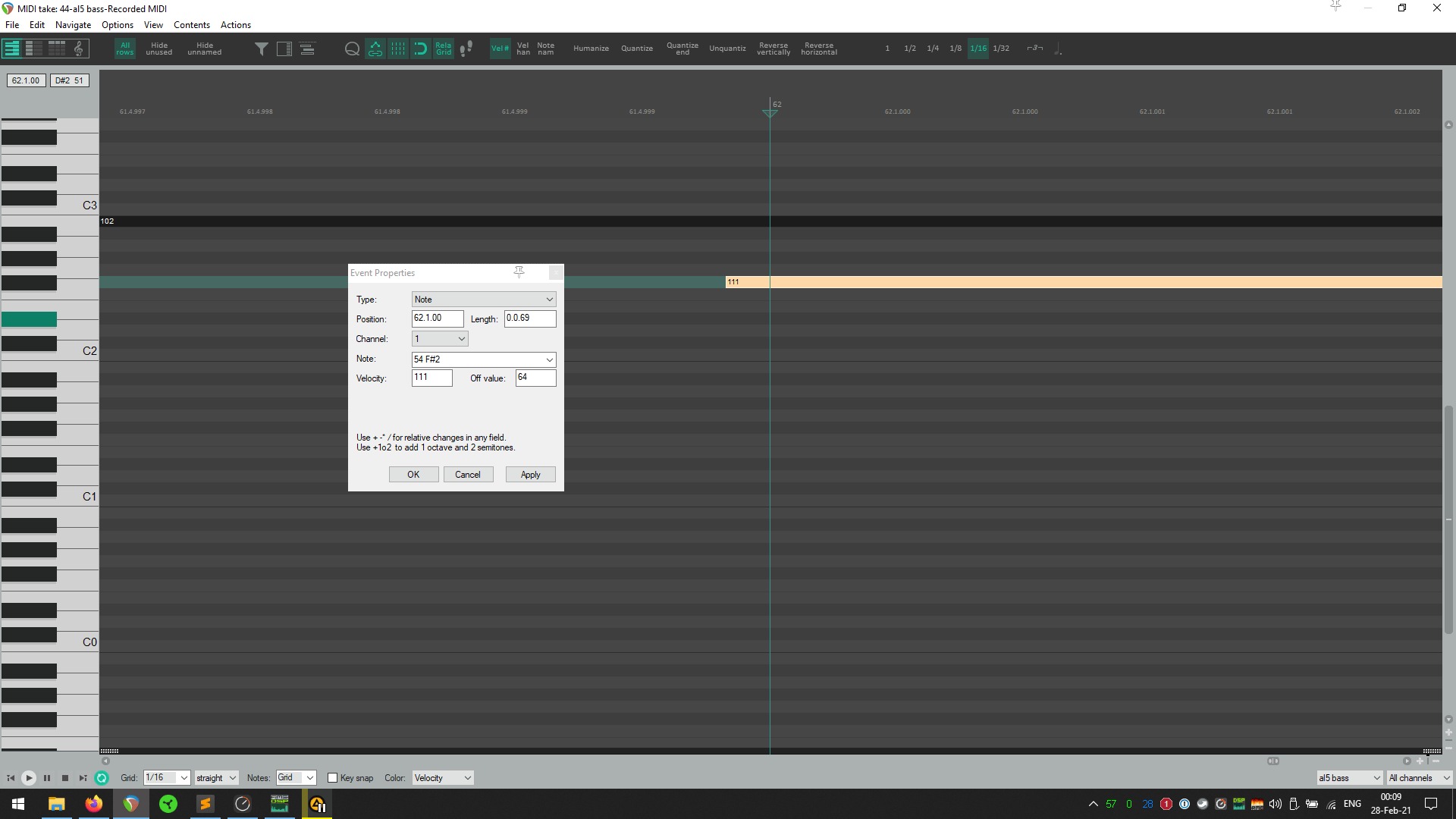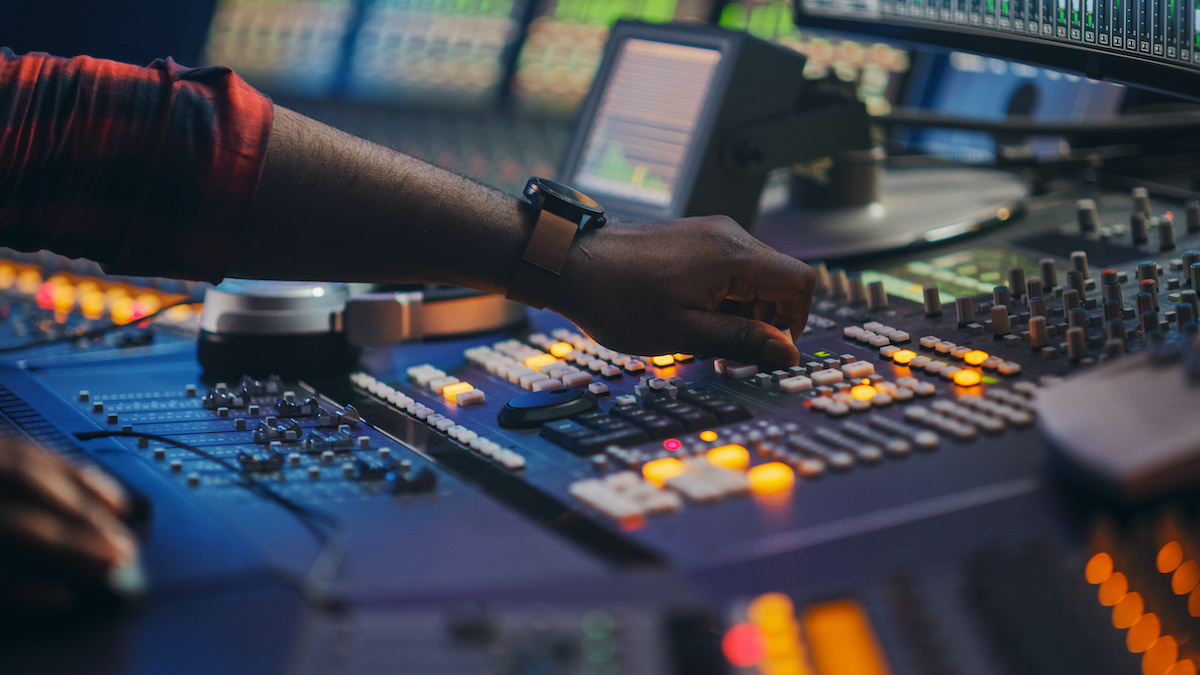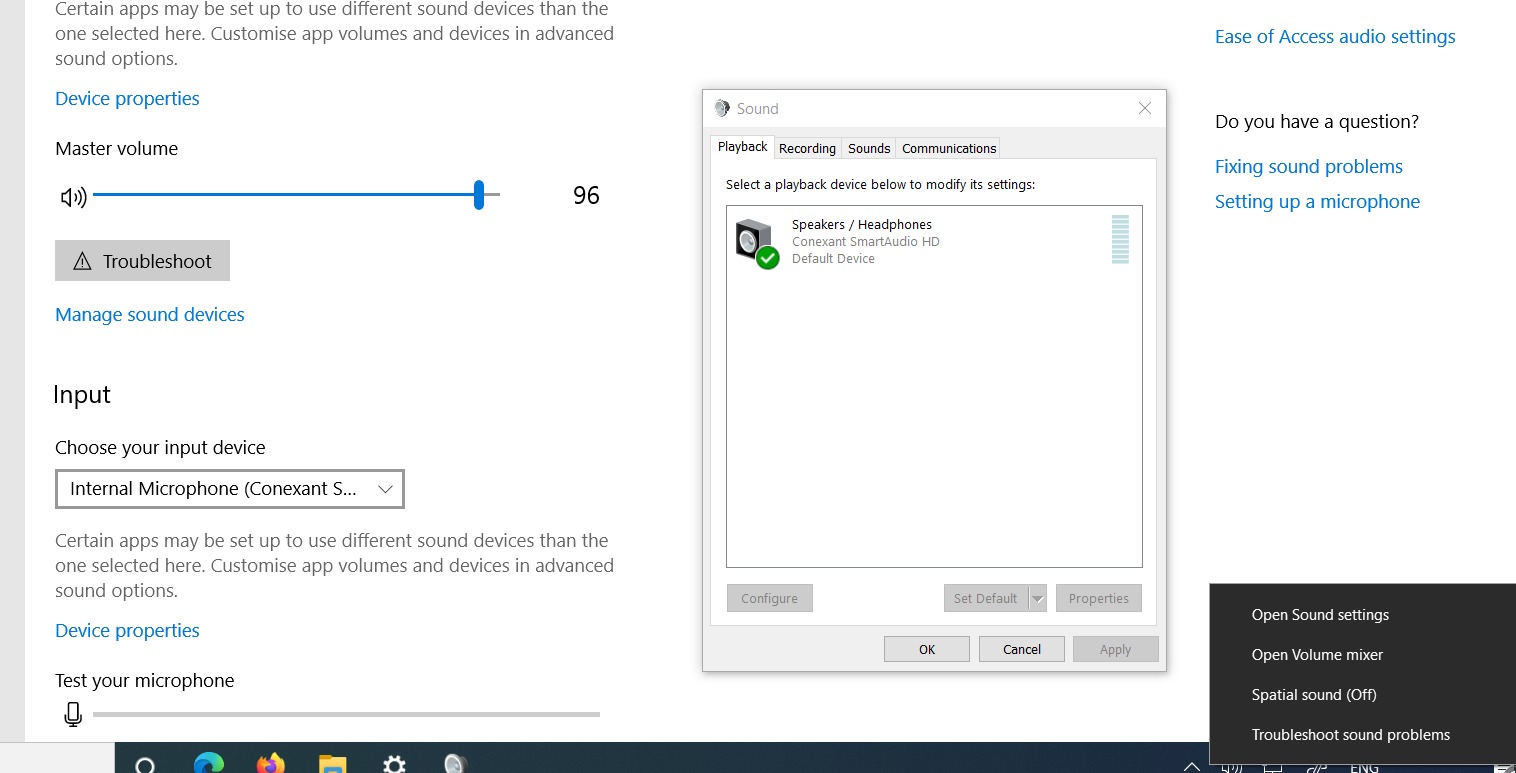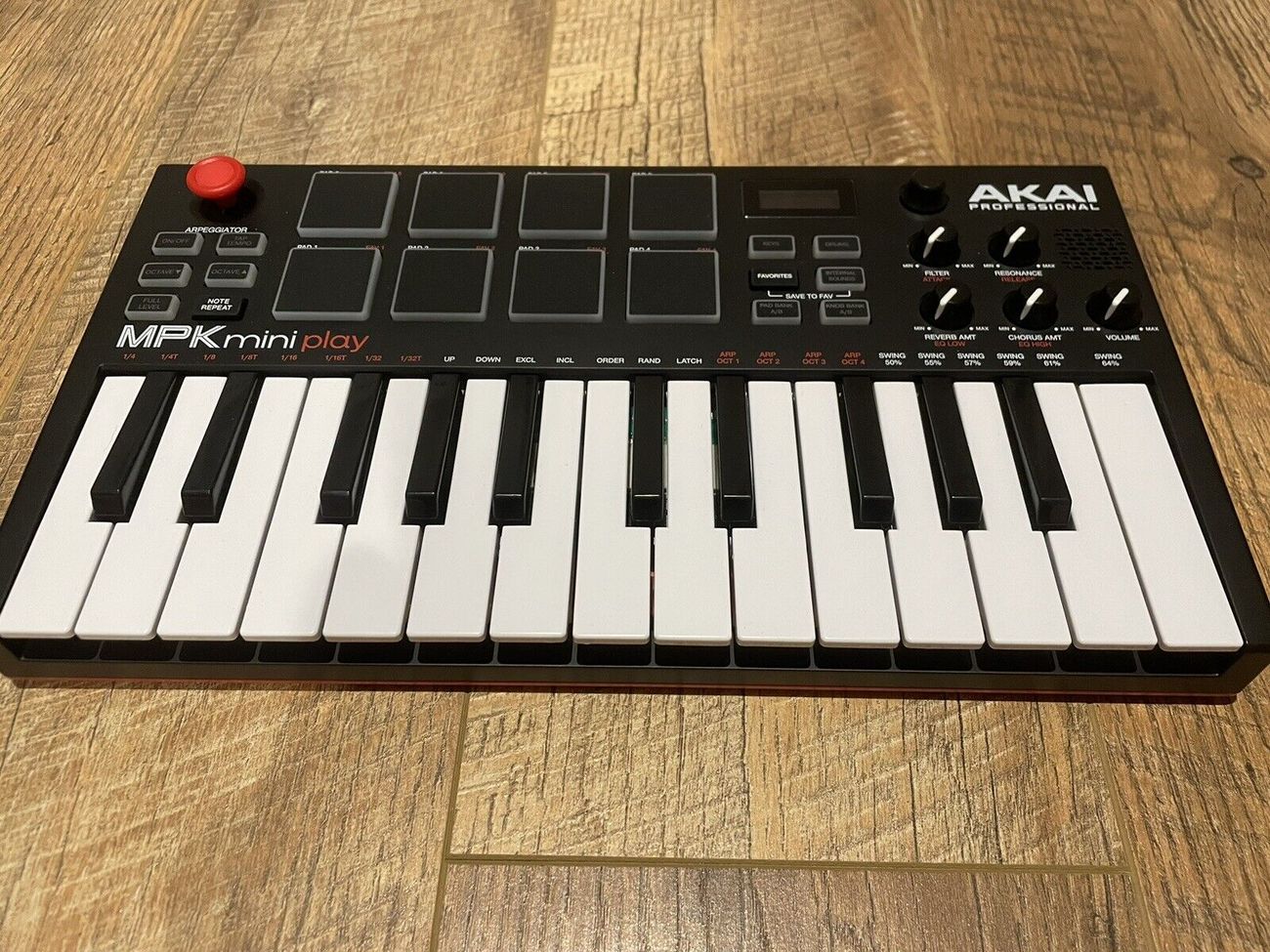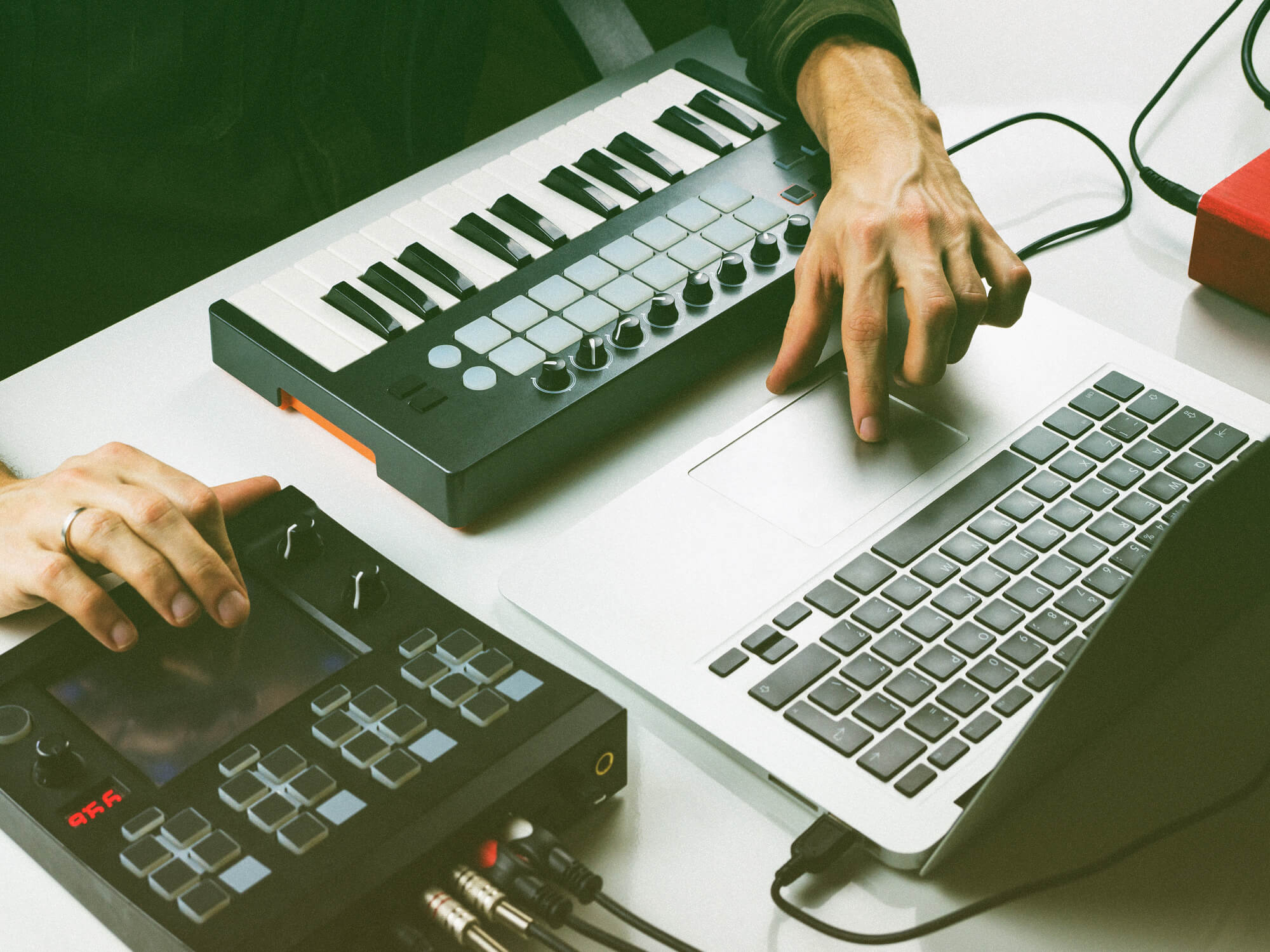Home>Production & Technology>MIDI>How To Make Samples For MIDI Playback


MIDI
How To Make Samples For MIDI Playback
Published: February 19, 2024
Learn how to create MIDI samples for flawless playback. Discover tips and techniques for producing high-quality MIDI samples.
(Many of the links in this article redirect to a specific reviewed product. Your purchase of these products through affiliate links helps to generate commission for AudioLover.com, at no extra cost. Learn more)
Table of Contents
Introduction
MIDI, which stands for Musical Instrument Digital Interface, has revolutionized the way music is created and produced. It serves as a universal language for electronic musical instruments, computers, and other audio devices, allowing them to communicate with each other. One of the key elements in MIDI production is the creation of samples for playback. These samples serve as the building blocks of a MIDI composition, capturing the essence and nuances of various musical instruments and sounds.
In this article, we will delve into the intricate art of crafting MIDI samples for playback. From selecting the right software to recording and editing MIDI tracks, we will explore the step-by-step process of creating high-quality samples that breathe life into MIDI compositions. Additionally, we will uncover the techniques for adjusting velocity and dynamics, as well as adding effects and processing to elevate the sonic richness of the samples.
Embark on this journey with us as we unlock the secrets of MIDI sample creation, empowering you to infuse your musical creations with authenticity and depth. Let's dive into the world of MIDI production and unravel the art of crafting compelling samples for playback.
Choosing the Right Software
Selecting the appropriate software is paramount in the process of creating MIDI samples for playback. The chosen software will serve as the canvas upon which the musical ideas are brought to life. When embarking on the journey of MIDI sample creation, it is essential to consider the following factors while choosing the right software:
-
User Interface and Workflow: The user interface plays a pivotal role in shaping the workflow of MIDI sample creation. An intuitive and user-friendly interface can streamline the production process, allowing for seamless navigation and efficient editing. Look for software that offers a clear and organized layout, enabling swift access to essential features such as track editing, instrument selection, and sample manipulation.
-
Instrument Libraries and Sound Quality: The richness and diversity of instrument libraries within the software are crucial in shaping the sonic landscape of MIDI samples. A comprehensive collection of high-quality instrument sounds, ranging from classic pianos and guitars to dynamic orchestral ensembles, empowers creators to capture the essence of each instrument with precision. Furthermore, the software's sound quality and fidelity should be top-notch, ensuring that the samples resonate with authenticity and depth.
-
MIDI Editing Capabilities: Robust MIDI editing capabilities are essential for shaping and refining the samples with precision. Look for software that offers a wide array of editing tools, including note manipulation, velocity adjustments, and quantization options. Additionally, the software should support advanced MIDI functionalities such as polyphonic aftertouch, pitch bend, and modulation control, enabling creators to infuse expressive nuances into the samples.
-
Compatibility and Integration: Seamless compatibility with external MIDI controllers, virtual instruments, and digital audio workstations (DAWs) is a fundamental aspect to consider. The chosen software should integrate effortlessly with a diverse range of MIDI hardware and software, facilitating a cohesive production environment. This integration empowers creators to leverage external controllers for real-time performance and recording, enhancing the creative possibilities within the MIDI sample creation process.
-
Processing and Effects: The inclusion of comprehensive processing and effects modules within the software can elevate the sonic character of MIDI samples. Look for software that offers a diverse range of audio effects, including reverb, delay, modulation, and equalization. Additionally, the ability to apply dynamic processing such as compression and limiting can refine the samples, adding depth and polish to the final output.
In essence, the right software serves as a catalyst for unleashing the full potential of MIDI sample creation. By carefully evaluating the user interface, instrument libraries, MIDI editing capabilities, compatibility, and processing features, creators can embark on a journey of sonic exploration, sculpting captivating samples that resonate with authenticity and creativity. The chosen software becomes a trusted ally in the pursuit of crafting compelling MIDI samples, empowering creators to translate their musical vision into vibrant and expressive sonic experiences.
Creating MIDI Tracks
Creating MIDI tracks forms the foundational stage in the intricate process of crafting compelling MIDI samples for playback. It serves as the canvas upon which musical ideas are translated into digital notation, capturing the essence of each instrument with precision and clarity. The creation of MIDI tracks involves a series of steps that culminate in the seamless integration of diverse musical elements, paving the way for the development of rich and dynamic samples.
The journey begins with selecting the appropriate instruments for the MIDI tracks. Whether it's the resonant timbre of a grand piano, the vibrant resonance of a string ensemble, or the rhythmic pulse of percussive elements, each instrument selection plays a pivotal role in shaping the sonic landscape of the composition. With a diverse array of virtual instruments at their disposal, creators can meticulously curate a palette of sounds that harmonize with the overarching vision of the composition.
Once the instruments are chosen, the process of MIDI sequencing unfolds, allowing creators to input musical notes, dynamics, and articulations with precision. This step involves leveraging the MIDI interface to input and arrange musical data, ensuring that each note, chord, and melody is meticulously captured within the digital realm. The versatility of MIDI sequencing empowers creators to craft intricate musical passages, from delicate arpeggios to thunderous chord progressions, with unparalleled control and finesse.
Furthermore, the creation of MIDI tracks encompasses the exploration of rhythmic patterns and tempo variations, infusing the composition with a sense of movement and vitality. By manipulating the timing and tempo parameters within the MIDI tracks, creators can breathe life into the samples, orchestrating a symphony of rhythmic interplay that captivates the listener's imagination. This dynamic interplay of tempo and rhythm lays the foundation for a compelling musical narrative, infusing the samples with a sense of energy and fluidity.
In essence, the process of creating MIDI tracks is a meticulous and creative endeavor that lays the groundwork for the development of evocative and expressive samples. Through the careful selection of instruments, precise MIDI sequencing, and rhythmic exploration, creators embark on a journey of sonic craftsmanship, sculpting MIDI tracks that resonate with authenticity and creativity. This foundational stage sets the stage for the subsequent steps in the MIDI sample creation process, propelling creators toward the realization of captivating and immersive musical experiences.
Recording and Editing MIDI Samples
Recording and editing MIDI samples represent a pivotal phase in the intricate process of crafting compelling and authentic musical experiences. This stage encompasses the meticulous capture of musical performances and the subsequent refinement of each nuance and expression within the MIDI samples. As creators venture into this realm of sonic exploration, they embark on a journey of precision and creativity, sculpting samples that resonate with depth and emotion.
The process commences with the recording of MIDI performances, wherein creators harness the expressive potential of MIDI controllers and instruments to breathe life into the samples. Whether it's the delicate keystrokes of a piano performance, the intricate phrasing of a string ensemble, or the rhythmic intricacies of percussive elements, each musical gesture is meticulously captured within the digital domain. The versatility of MIDI recording empowers creators to infuse their performances with dynamic nuances, from subtle variations in velocity to expressive pitch bends and modulations.
Once the MIDI performances are captured, the stage is set for the meticulous editing and refinement of the samples. This phase involves delving into the intricacies of MIDI data, shaping each note, articulation, and dynamic contour with precision. Creators have the opportunity to fine-tune the timing of musical passages, adjust the velocity of individual notes, and refine the articulations to capture the expressive subtleties of the performances. Furthermore, the editing process enables creators to explore polyphonic intricacies, shaping harmonies and counterpoints with meticulous attention to detail.
The art of editing MIDI samples extends beyond mere technical adjustments, encompassing the infusion of emotion and character into each musical phrase. Creators have the freedom to imbue the samples with a sense of human touch, leveraging editing tools to introduce subtle imperfections and nuances that mirror the nuances of live performances. This approach adds an organic and authentic dimension to the samples, elevating them beyond mere digital renditions to encapsulate the essence of human expression.
In essence, the recording and editing of MIDI samples represent a transformative phase in the journey of sonic craftsmanship. It is a realm where technical precision converges with artistic expression, empowering creators to sculpt samples that resonate with authenticity and emotion. As creators navigate this stage, they embark on a voyage of sonic exploration, harnessing the power of MIDI to capture the essence of musical performances and shape them into compelling and immersive samples.
Adjusting Velocity and Dynamics
Adjusting velocity and dynamics within MIDI samples is a transformative process that infuses the musical performances with depth, expression, and nuance. Velocity, in the context of MIDI, refers to the varying degrees of force with which a note is played, while dynamics encompass the subtle variations in volume and intensity throughout a musical passage. By delving into the realm of velocity and dynamics, creators unlock the potential to breathe life into the samples, shaping them into evocative and expressive sonic experiences.
The manipulation of velocity within MIDI samples allows creators to emulate the nuanced touch of live performances, adding a sense of realism and emotion to the compositions. By adjusting the velocity of individual notes, creators can imbue the samples with a dynamic range that mirrors the ebb and flow of human expression. Soft passages can be delicately rendered with nuanced velocity, while more emphatic sections can resonate with heightened intensity. This interplay of velocity adds a layer of authenticity to the samples, capturing the organic nuances of musical performances.
Furthermore, the exploration of dynamics within MIDI samples empowers creators to shape the contours of musical phrases with precision and artistry. By modulating the volume and intensity of notes, creators can craft passages that unfold with a sense of drama and emotive resonance. The subtle crescendos and diminuendos, facilitated by dynamic adjustments, imbue the samples with a sense of narrative depth, guiding the listener through a journey of sonic expression.
Moreover, the manipulation of dynamics extends beyond mere volume adjustments, encompassing the exploration of articulations and expressive nuances within the samples. From delicate legato passages to vibrant staccato motifs, the interplay of dynamics shapes the character and texture of the samples, infusing them with a sense of musicality and emotive resonance.
In essence, the process of adjusting velocity and dynamics within MIDI samples transcends technical manipulation, evolving into a realm of artistic expression and sonic storytelling. It is a stage where creators harness the power of MIDI to capture the nuances of human performances, infusing the samples with a sense of depth, emotion, and authenticity. As creators navigate this transformative process, they embark on a journey of sonic craftsmanship, sculpting MIDI samples that resonate with vibrant and expressive musicality.
Adding Effects and Processing
Adding effects and processing to MIDI samples constitutes a pivotal stage in the journey of sonic craftsmanship, elevating the samples to new heights of sonic richness and expressive depth. This transformative process empowers creators to infuse their compositions with a diverse array of sonic textures, spatial dimensions, and tonal nuances, shaping the samples into compelling and immersive musical experiences.
The inclusion of audio effects within the realm of MIDI samples opens a gateway to a myriad of sonic possibilities. From reverberant spaces that imbue the samples with a sense of depth and ambience to ethereal delays that unfold in cascading layers, the palette of effects empowers creators to sculpt sonic landscapes that resonate with evocative character. Furthermore, the exploration of modulation effects such as choruses, phasers, and flangers introduces a sense of movement and fluidity within the samples, adding a dynamic dimension to the sonic fabric.
Additionally, the realm of processing encompasses a diverse array of tools and techniques that refine and sculpt the sonic characteristics of MIDI samples. Dynamic processing, including compression and limiting, allows creators to shape the dynamic range of the samples, ensuring a balanced and polished sonic output. Equalization facilitates the fine-tuning of tonal balance, enabling creators to accentuate the sonic nuances of individual instruments and frequencies. Moreover, the inclusion of harmonic processing, such as saturation and distortion, introduces a sense of warmth and character to the samples, infusing them with a rich and vibrant sonic tapestry.
The integration of effects and processing within the realm of MIDI samples transcends mere technical manipulation, evolving into a realm of artistic expression and sonic storytelling. It is a stage where creators harness the power of audio processing to imbue their compositions with depth, emotion, and sonic character. As creators navigate this transformative process, they embark on a journey of sonic craftsmanship, sculpting MIDI samples that resonate with vibrant and expressive musicality.
In essence, the addition of effects and processing represents a pivotal phase in the journey of MIDI sample creation, propelling the samples toward a realm of sonic richness and expressive depth. It is a stage where creators venture into a world of sonic exploration, shaping their compositions into captivating and immersive sonic experiences.
Conclusion
In conclusion, the art of crafting MIDI samples for playback is a multifaceted journey that intertwines technical precision with artistic expression. From the meticulous selection of software to the transformative stages of recording, editing, and processing, creators embark on a voyage of sonic craftsmanship, sculpting samples that resonate with depth, emotion, and authenticity.
The process of MIDI sample creation transcends mere technical manipulation, evolving into a realm of sonic storytelling and emotive resonance. It empowers creators to capture the nuances of human performances, infusing the samples with a sense of vibrancy and expressive musicality. As creators navigate each stage of the journey, they unravel the potential of MIDI as a powerful medium for translating musical vision into compelling and immersive sonic experiences.
Furthermore, the culmination of MIDI sample creation represents the convergence of technical prowess and artistic ingenuity, yielding samples that breathe with authenticity and depth. It is a testament to the transformative power of MIDI as a universal language for musical expression, transcending the boundaries of traditional instrumentation and opening new frontiers of sonic exploration.
Ultimately, the journey of crafting MIDI samples for playback is a testament to the boundless creativity and innovation that permeate the realm of music production. It is an invitation for creators to harness the power of MIDI, sculpting samples that resonate with evocative character and expressive depth. As the sonic tapestry unfolds, each sample becomes a testament to the artistry and vision of its creator, resonating with the timeless allure of musical expression.
In essence, the journey of MIDI sample creation is a testament to the transformative power of music and technology, converging to shape a realm of sonic exploration that transcends boundaries and resonates with timeless allure. It is an ode to the art of musical storytelling, where each sample becomes a chapter in a larger narrative of creativity and expression. As creators continue to embark on this journey, they pave the way for new sonic horizons, shaping the future of musical expression through the evocative resonance of MIDI samples.

